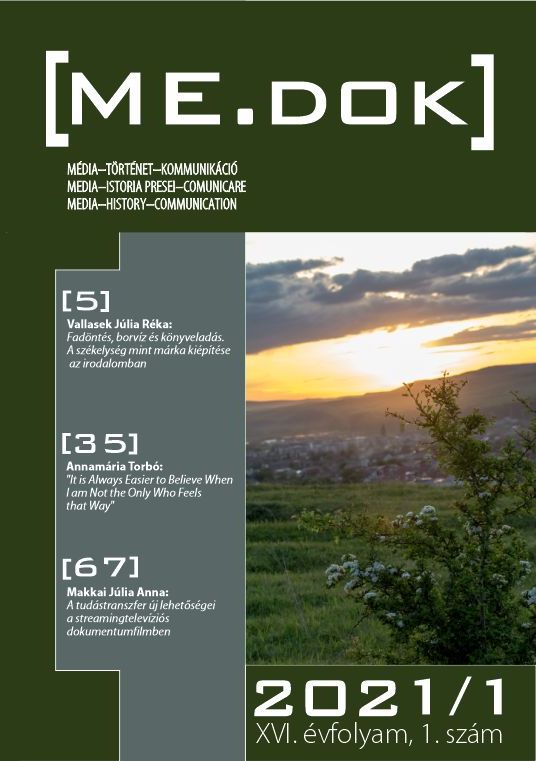Szentegyházasfalu szerepe az
1930-as évek román nemzetépítési
politikájában
Szentegyházasfalu/ Vlăhiţa in the Romanian nation-building politics during the 1930s
Author(s): Csanád DemeterSubject(s): Cultural history, Media studies, Ethnohistory, Local History / Microhistory, Theory of Communication
Published by: Medea Egyesület
Keywords: Szentegyházasfalu; Oláhfalu; Romanian nation-building politics; origin myth;
Summary/Abstract: The exact date of the genesis and the origin of the appellation of Szentegyházasfalu is unknown, therefore in the Hungarian and Romanianhistoriography diff erent origin myths appear. During the centuries, we meet Oláhfalu, Szentegyházas-Oláhfalu, Szentegyházasfalu namings ,then after 1918, we meet Vlăhiţa [vlah , valah-oláh] offi cial appellations. Until the 19th century the Sekler-Hungarian origin consciousness haddominated, which was tried to be changed by the Romanian authority after World War I. By the peace treaty of Trianon [the 4th of June, 1920]Transylvania has become part of Romania, so in Seklerland, the nation-building politics began, of which organic part was the creation of aRomanian centered environment. In this area, Szentegyházasfalu meant the key point of the above-mentioned political process, since, just thenaming of the settlement [Oláhfalu] gave reason for debate.
Journal: ME.DOK Média-Történet-Kommunikáció
- Issue Year: XVI/2021
- Issue No: 1
- Page Range: 23-33
- Page Count: 11
- Language: Hungarian

